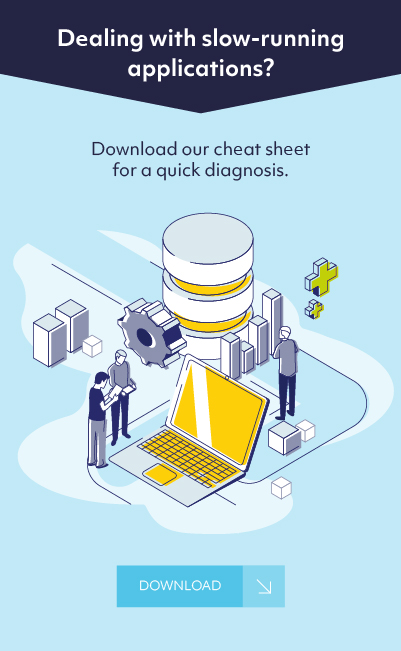The New Mandate for CIOs in 2026
As we move into 2026, the role of the CIO is evolving faster than ever. No longer is it enough to deliver projects on time or just keep systems running. Modern CIOs are expected to drive innovation, manage risk, and ensure compliance, all while supporting scalability and business agility. According to analysts, CIOs will be judged less on technology deployments and more on business outcomes, data governance, and how adaptable their systems become.
Why 2026 Is a Pivotal Year for Database Strategy
Several forces are converging to reshape how enterprises manage data in 2026:
- Cloud Maturity and Cost Optimization: Most enterprises have completed at least one wave of cloud migration. The new focus is optimization over expansion, reducing spend, eliminating idle resources, and refining workload placement between cloud and on-prem environments.
- AI-Driven Operations: Predictive maintenance, automated tuning, and anomaly detection are becoming table stakes. CIOs are now expected to integrate AI-driven observability into their database strategy.
- Tighter Data Governance and Compliance: With evolving regulations like U.S. federal data privacy acts and expanding global compliance frameworks, CIOs must ensure that data systems remain auditable, secure, and policy-aligned.
- Business Continuity and High Availability: As organizations demand 24/7 access to critical systems, high availability (HA) and disaster recovery (DR) have moved from nice to have to non-negotiable.
Each of these trends requires more than technical readiness; they demand an integrated database strategy that connects performance with governance.
From Cloud to Compliance: Building a Smarter Database Strategy
A strong CIO database strategy in 2026 will balance innovation with control. The key is designing systems that deliver speed without sacrificing stability.
Modernize Without Replacing
Not every legacy system needs migration. Optimization can often deliver near-cloud performance for a fraction of the cost.
Action for CIOs: Evaluate workloads based on business value, not age. Modernize where ROI is clear, and extend legacy performance through expert tuning and proactive monitoring.
Prioritize Data Governance Early
Compliance can no longer be an afterthought. Governance frameworks should define access, security, and retention policies before data moves across environments.
Action for CIOs: Build unified governance that spans on-prem and cloud databases. Align database management with frameworks such as HIPAA, SOC 2, or ISO 27001.
Invest in Predictive Observability
Traditional monitoring tools only alert after something goes wrong. Predictive observability uses machine learning to anticipate performance degradation or compliance drift.
Action for CIOs: Adopt database services that leverage AI responsibly to prevent downtime and automatically remediate configuration drift.
Optimize for Cost and Control
Public cloud flexibility has a hidden cost: unpredictability. CIOs are increasingly moving toward cost-aware hybrid strategies that maximize performance without runaway expenses.
Action for CIOs: Use managed database partners who provide detailed cost analysis, capacity planning, and optimization dashboards to help finance and IT align on spend.
Ensure Continuous Resilience
A database strategy is only as strong as its recovery plan.
Action for CIOs: Test failover scenarios quarterly. Partner with DBAs who specialize in HA/DR solutions tailored to your platform, whether SQL Server, Oracle, AWS RDS, or any database platform on-premise or cloud.
The CIO’s Competitive Advantage: Partnership Over Platform
In 2026, the real edge for CIOs won’t come from choosing the best platform. It will come from the right partnerships.
Senior-level DBAs and data strategists provide an outside perspective that bridges business goals with technical execution. By partnering with a managed database services firm, CIOs can:
- Extend internal team capacity with senior expertise
- Gain ongoing visibility into compliance and performance
- Reduce operational risk through 24/7 monitoring and optimization
- Build a roadmap that evolves alongside business priorities
Simply focusing on database performance is not enough. To thrive in 2026, CIOs need to focus on overall business performance measured through data agility, uptime, and cost efficiency.
What Excellence Looks Like in 2026
The most forward-thinking CIOs are reframing database management as a continuous improvement discipline that balances agility, governance, and long-term ROI. In 2026, success depends less on the technologies you adopt and more on how effectively you align them with measurable business outcomes.
The framework below outlines what that alignment looks like in practice. It highlights five core focus areas where a modern database strategy delivers tangible value, from cost efficiency to compliance resilience. Use it as a roadmap to benchmark your current capabilities and identify where strategic partnerships can drive the most impact.
The difference between database maintenance and database strategy lies in measurement.
CIOs who adopt this continuous improvement mindset can translate IT reliability into business performance, proving value through uptime, cost predictability, risk reduction, and operational agility.
At Solvaria, we help CIOs operationalize this framework, transforming these priorities into measurable outcomes through proactive optimization, compliance automation, and senior-level DBA expertise.
The path to competitive advantage in 2026 isn’t about chasing new platforms; it’s about building smarter systems and partnerships that make every environment perform at its best.
Book a call to see how Solvaria can turn your 2026 database strategy into measurable business results.

